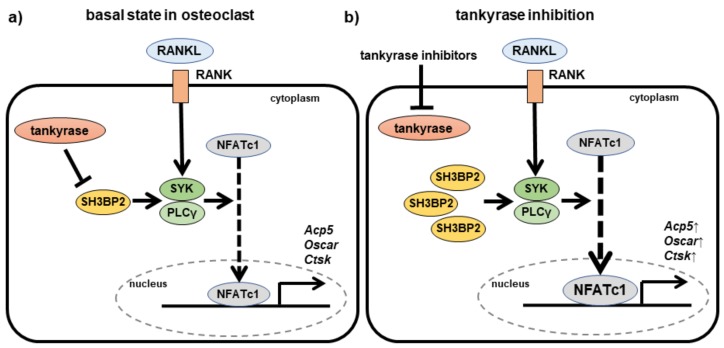Figure 4.
Effects of tankyrase inhibitors in osteoclasts. (a) Signaling pathways of osteoclastogenesis in physiological conditions. SH3BP2 transduces osteoclast-inducing signaling pathways as an adaptor protein downstream of RANK. Tankyrase regulates expression of the SH3BP2 protein. (b) In the presence of tankyrase inhibitors, the SH3BP2 protein accumulates in the cells in the absence of the tankyrase-mediated degradation process. Accumulated SH3BP2 enhances activation of SYK and PLCγ downstream of RANK, resulting in enhanced osteoclastogenesis, represented by increased expression of osteoclast-associated genes, such as Acp5, Oscar, Ctsk. A solid arrow indicates direct stimulatory modification, a blunt-ended arrow indicates direct inhibitory modification, and a dashed arrow indicates translocation of the protein. RANKL, receptor activator of NF-κB ligand; RANK, receptor activator of NF-κB; SYK, spleen tyrosine kinase, PLCγ, phospholipase C gamma; NFATc1, nuclear factor of activated T-cells, cytoplasmic 1; Acp5, acid phosphatase 5; Oscar, osteoclast-associated receptor; Ctsk, cathepsin K.

